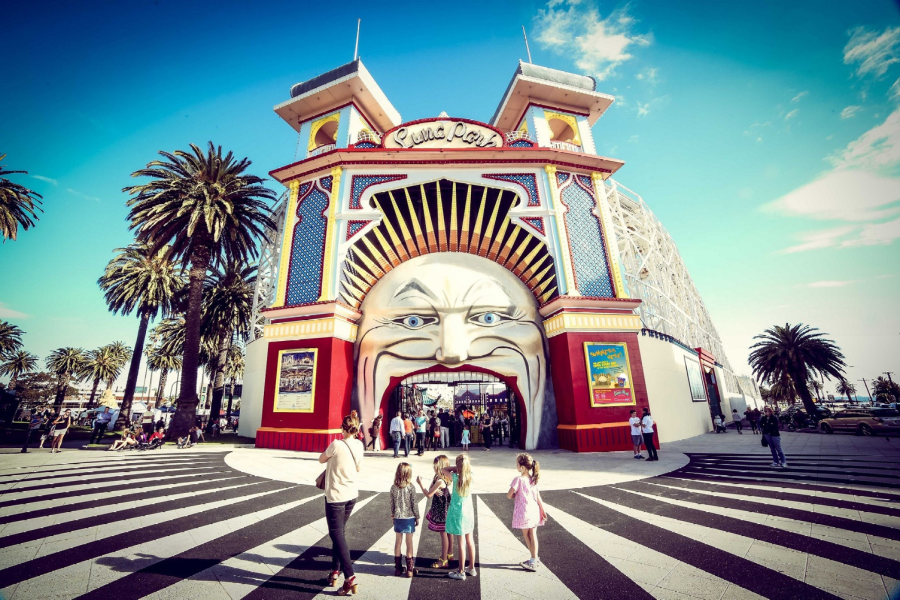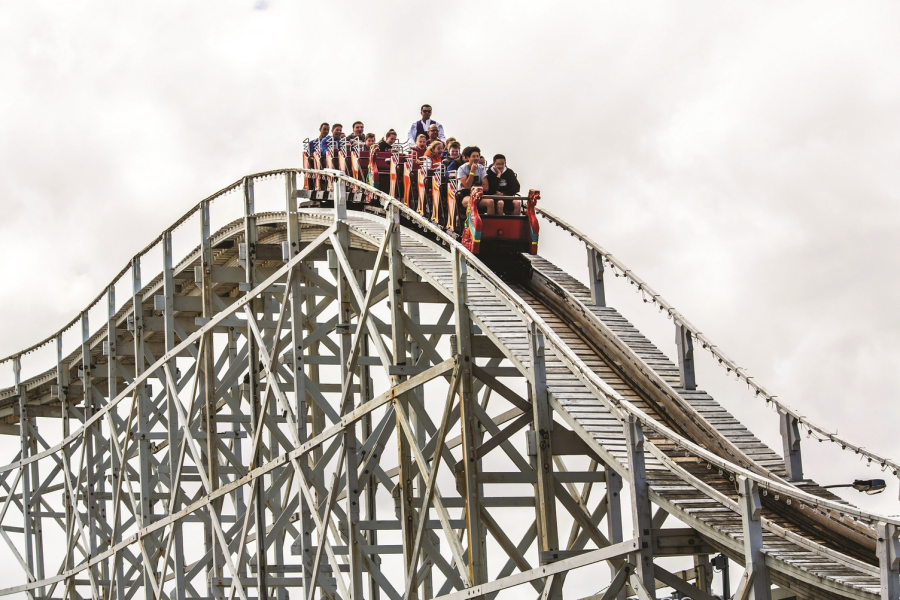Luna Park Melbourne Honors Significant Attractions

There are few better examples of attractions heritage at work than at Luna Park in Melbourne, Australia. Opened in 1912, the 4-hectare park has multiple historic attractions, including the oldest continually operating roller coaster on Earth.
Mary Stuart, Luna Park’s president and CEO, answers a few questions from Funworld about the preservation of the park’s historic attractions and their impact on guests.
Funworld: Why does Luna Park Melbourne place such emphasis on maintaining its heritage attractions?
Mary Stuart: Our heritage attractions are special and garner great affection and loyalty from our guests, staff, and owners, so yes, we’re very committed to the preservation of our heritage attractions. We’re proud that several Luna Park attractions are listed on the Australian National Heritage Register, a mark of distinction that tells the world of their importance. This is no small thing, and we puff our chests out with pride at this recognition. What is much more challenging is keeping them working. When you have working museum pieces that are loved and enjoyed and used by hundreds of thousands of people every year, dedication is required to keep them working.
Your park has landmark examples of the two most historically significant attractions at amusement parks: carousels and roller coasters. What’s involved in keeping “Carousel” and “The Great Scenic Railway” preserved?
MS: The “Carousel” is a beautiful example of carnival art and is a working museum piece. A continual restoration maintains it, and repainting of the horses and carriages is done every year. The story of “The Great Scenic Railway” is one of constant work. It was closed for nearly a year in 2007 to rebuild the entire length of the substructure and track. Another important rebuild in 2011 stabilized its famous “Face and Towers” structure. During such times, there’s no choice but to grit your teeth and hunker down for more painstaking, time-consuming, and expensive work.
Because Luna Park receives no external funding and its ticket sales don’t cover the cost of preserving heritage attractions, how does the park pay for their preservation?
MS: Income from functions and events cross-subsidize heritage retention costs, and this is acceptable only to very patient shareholders. Funding heritage retention costs is a real issue for older parks. It’s not possible to pay for heritage retention only by selling tickets to ride, as we are simply too small. We must further develop business streams that can cross-subsidize retention of the heritage into the future. The alternative is for the community, through government, to fund the retention of the heritage. The other alternative is that the heritage is lost because it becomes too expensive for the business to sustain. Sadly, this has happened all too often and all around the world.
How does Luna Park’s small size affect decisions about adding new rides?
MS: Because we are so size-restricted, any replacement rides must be assessed against a number of criteria, and the most important is always footprint. When you are so space-poor, being able to move attractions can be the difference between being able to purchase a new ride or not. If you have some flexibility with moving attractions around, you also

have more flexibility with what can be purchased. IAAPA Expos give Luna Park the opportunity to see what’s in the market that can complement our existing ride mix.
What tells you that Melbourne residents and visitors appreciate Luna Park’s focus on preserving its heritage?
MS: When a place is loved, and they come because this place is a part of the fabric of their lives. It’s Australia’s oldest pleasure park, steeped in history, and a treasure that has survived against the odds. It sits by the sea in the heart of St. Kilda. It has a charm and a character that cannot be invented or replicated, and it holds a special place in the hearts of the people. This value is also reflected in the people who work here.
What role can visitors play in Luna Park Melbourne’s preservation?
MS: Just come! We exist for the people. We should not forget it isn’t a small thing for a lot of people to be able to afford to take their family to our park, or any amusement or theme park. Some families save for a year or more to be able to afford to buy the tickets. It is a big deal for parents wanting to give their kids that special experience. Without strong leadership from our board, a legion of dedicated staff, and the loyal support of our guests, Luna Park would not be what it is today.
